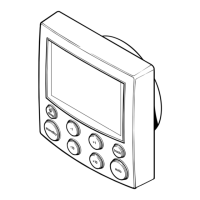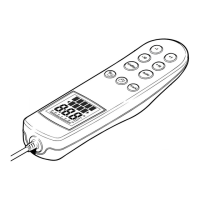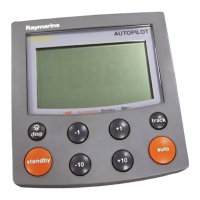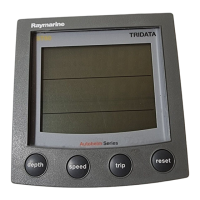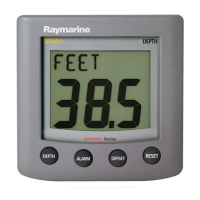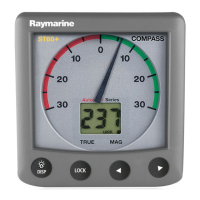12 ST60 Graphic Display Operating Guide
Internal alarms
The internal alarms are as follows:
External alarms
An optional Auxiliary Alarm can be fitted at a convenient remote position, to
give a loud, audible indication if any one of a range of alarms occurs. This
option is particularly useful for situations where high ambient noise may
make it difficult to hear the instrument’s internal alarm (e.g. aboard a power
boat).
Note: An Auxiliary Alarm cannot be used if the NMEA OUT port is being
used for NMEA data.
What must I do if an alarm occurs?
If an alarm occurs, investigate the cause immediately and if possible, take
appropriate action to remove the cause of the alarm. If an alarm message is
displayed, use this to guide your course of action.
Silencing internal alarms
You can silence an internal alarm by pressing any one of the ST60 Graphic
Display front panel buttons. Remember though, that removing the alarm
sound does not remove the cause of an alarm. If the alarm condition persists,
the alarm will recur.
Message Meaning
ANCHOR ALARM (with current depth) Deep or shallow anchor alarm
SHALLOW ALARM (with current depth) Shallow water alarm
DEEP ALARM (with current depth) Deep water alarm
HIGH WIND ALARM (with current wind speed) High wind speed alarm
RADAR ALARM Radar guard zone alarm
LOST FIX ALARM Lost fix alarm
LOW BATTERY ALARM (with current voltage) The battery voltage has fallen below the
specified low-voltage level.
81226_1.book Page 12 Wednesday, November 19, 2003 9:53 AM

